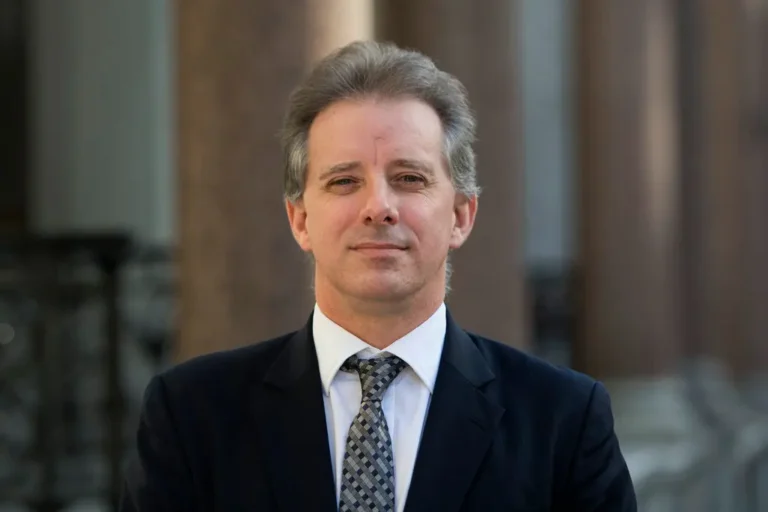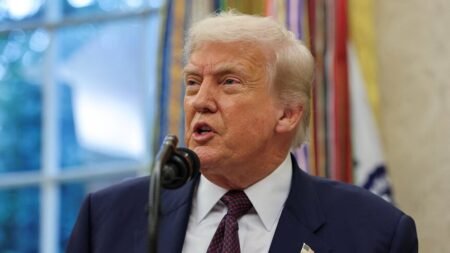The Steele Dossier is a collection of reports compiled by former British intelligence officer Christopher Steele during 2016. Commissioned by opposition research firms hired by Hillary Clinton’s 2016 presidential campaign and the Democratic National Committee, the dossier aimed to uncover connections between Donald Trump and Russia during the 2016 U.S. presidential election. Steele, a former MI6 agent, produced 17 memos between June and December 2016 that contained allegations of secret dealings and collusion between the Trump campaign and Russian officials.
The dossier claimed that Russia possessed compromising material on Donald Trump, sometimes called “kompromat,” and that several Trump associates had been involved in covert meetings with Russian operatives. Many of these claims, however, were never verified and were later found to be false or highly questionable. Despite this, the dossier became a controversial and highly influential document in the investigation of Russian interference in the 2016 election.
Funding for the Steele Dossier came through a complex chain involving the Democratic National Committee and Hillary Clinton’s campaign. These groups paid the law firm Perkins Coie, which then hired Fusion GPS, a private research firm. Fusion GPS subcontracted Christopher Steele to carry out the investigation. This political connection to the dossier’s funding has been a central point in debates about its credibility, with critics arguing that the dossier was politically motivated from the start.
Parts of the Steele Dossier were used by the FBI as evidence when applying for a Foreign Intelligence Surveillance Act (FISA) warrant to monitor Carter Page, a former Trump campaign adviser. The dossier’s inclusion in government investigations brought it into the spotlight, even as questions about its accuracy grew. The 2017 Intelligence Community Assessment mentioned the dossier in relation to Russian efforts to interfere with the election, but it did not heavily rely on Steele’s reports.
Several official investigations have since reviewed the Steele Dossier and its impact. The Mueller Report, published in 2019, found no criminal conspiracy between the Trump campaign and Russia and did not verify most of the dossier’s claims. While it confirmed that Russia did interfere in the election, the dossier’s allegations about collusion were not supported by evidence gathered during the investigation.
A 2019 Department of Justice Inspector General report, known as the Horowitz Report, examined how the FBI used the Steele Dossier in seeking surveillance warrants. The report found that the FBI made serious errors and omissions, including failing to properly verify the dossier’s contents before submitting them to the FISA court. This lack of verification raised concerns about the FBI’s handling of intelligence and led to criticism over reliance on unverified information.
Further scrutiny came from the 2023 Durham Report, which concluded that the FBI should not have opened its investigation into Trump-Russia ties based on such weak evidence. The report highlighted internal concerns within the FBI about the dossier’s credibility but noted that it was still used in the early stages of the investigation. This report intensified debates over whether political bias influenced the FBI’s actions and deepened public mistrust in intelligence agencies.
The Steele Dossier also became a symbol of political controversy. Supporters argue it revealed important leads and evidence of Russian interference, while critics see it as a politically motivated attempt to damage Donald Trump. The dossier’s ties to Clinton’s campaign and the Democratic Party have fueled accusations that it was part of a broader effort to undermine Trump’s presidency from the start.
The FBI’s use of the dossier, despite its questionable credibility, led to accusations of misleading the FISA court. The Department of Justice Inspector General found that FBI officials failed to fully inform the court of concerns about the dossier’s reliability. This failure has been cited as a key example of intelligence failures that contributed to political polarization and mistrust of government institutions.
Today, the Steele Dossier is largely discredited as a reliable source of information. Many of its claims have been debunked or remain unproven, and it is viewed as a deeply flawed document. Nevertheless, its influence on the 2016 election investigations and the broader debate over Russian interference remains significant. The dossier has left a lasting mark on American politics and intelligence operations, illustrating the challenges of balancing intelligence gathering, political interests, and legal standards in a highly polarized environment.
While the dossier itself failed to provide conclusive evidence of collusion, its existence triggered years of investigations, public debate, and legal scrutiny that continue to affect U.S. political discourse. It stands as a cautionary tale about the risks of mixing partisan politics with intelligence work and the importance of rigorous verification in national security matters.







